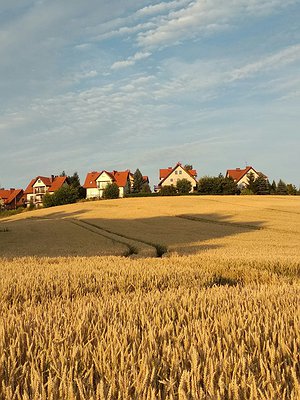
Author: РУИС АДРИАНА САЛАЗАР | RUIZ ADRIANA SALAZAR
The projection for the year 2100 introduces a time horizon in which climatic and environmental dynamics will be marked by significant transformations. In this context, rural housing appears as a fundamental space for social life, and the use of passive bioclimatic strategies is an essential component to guarantee a comfortable stay.
The inevitable evolution of the climate and the expected environmental pressures require a deep rethink of how rural dwellings are conceived, designed and built. The projection of passive bioclimatic strategies in this scenario turns not only into a necessary response to environmental challenges, but also into an active commitment to resilience, energy efficiency and the preservation of the cultural identity of rural communities.
In this study, we aim to explore innovative strategies that can make it possible to adapt rural housing to changing climatic conditions, giving priority to thermal comfort inside it. From the introduction of advanced technologies to traditional building practices, we propose to rethink the relationship between architecture, the environment and rural communities, thereby building a future where dwellings not only stand the test of time, but also thrive in harmony with nature.
In this future environment, passive bioclimatic strategies in rural housing appear to be key elements in creating suitable living conditions. In the face of climate challenges and transformations of meteorological patterns that are predicted in the future, it is necessary to design and implement strategies that mitigate environmental impacts and ensure the comfort of residents. With predictable changes in climatic conditions, passive bioclimatic strategies will become vital for adapting rural dwellings to extreme temperatures, more frequent climatic events and variations in precipitation.
The inclusion of elements such as thermal insulation, natural ventilation and careful selection of building materials will create livable spaces that dynamically adapt to changing climatic conditions. On the horizon of 2100, consideration of climatic variations and thermal comfort will be key to the development of buildings suitable for use. Strategies such as the correct orientation of housing for the use of solar radiation, the capture and effective management of rainwater, as well as the use of building materials suitable for retaining sunlight, will become fundamental elements of the design of rural housing, mainly in humid cold climates.
Traditional rural housing was shaped by construction practices rooted in ancient times - they have demonstrated resilience for a long time. However, the climate picture of the XXI century poses new challenges that require smart adaptation. The use of traditional building materials with high energy efficiency, such as stone and clay, which absorb and release heat gradually, helps to maintain a more stable temperature. Combining passive strategies and ancient methods, a construction paradigm is being created that pays tribute to the rich cultural heritage and at the same time embraces innovation to overcome future challenges.
It is also necessary to take into account the preservation of traditional construction practices and the application of local knowledge. The design of passive bioclimatic strategies should be objective, taking into account the needs of residents in order to ensure the viability of the proposed solutions. The vision of this future environment implies not only an advanced technological approach, but also a cultural, inclusive and resilience-oriented perspective.
By combining traditional knowledge and new technologies, it is possible to build a future where rural homes not only withstand the challenges of climate change, but also thrive in harmony with the environment. The combination of bioclimatic design inspired by tradition, efficient building materials and passive heating systems demonstrates the promising potential for life in the years ahead.
To sum up, the projection of passive bioclimatic strategies and ancient heating methods in rural homes by 2100 represents a significant step towards creating a livable environment rooted in cultural heritage.